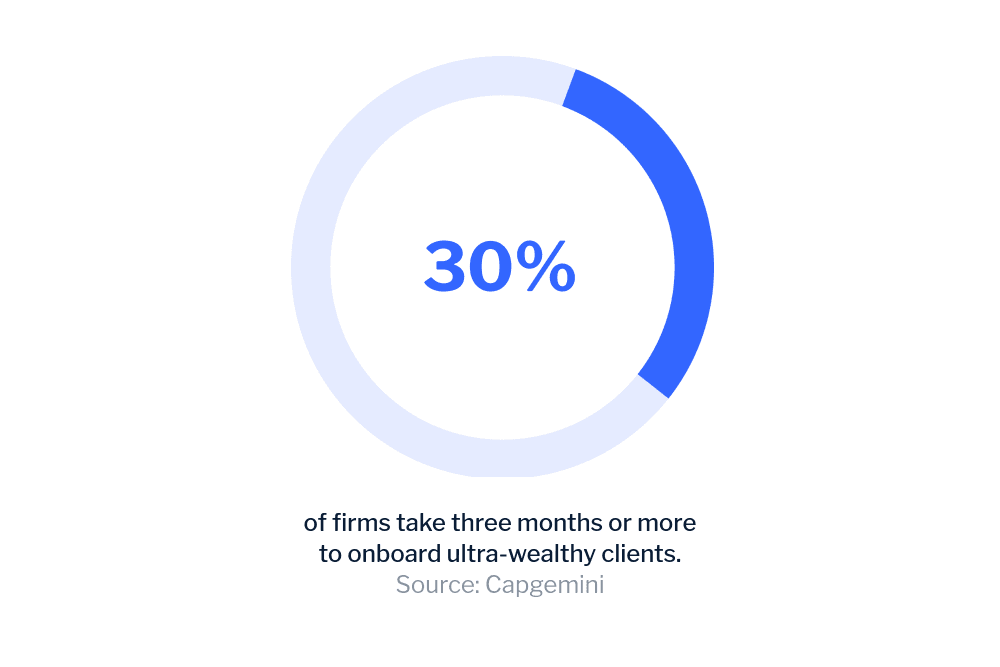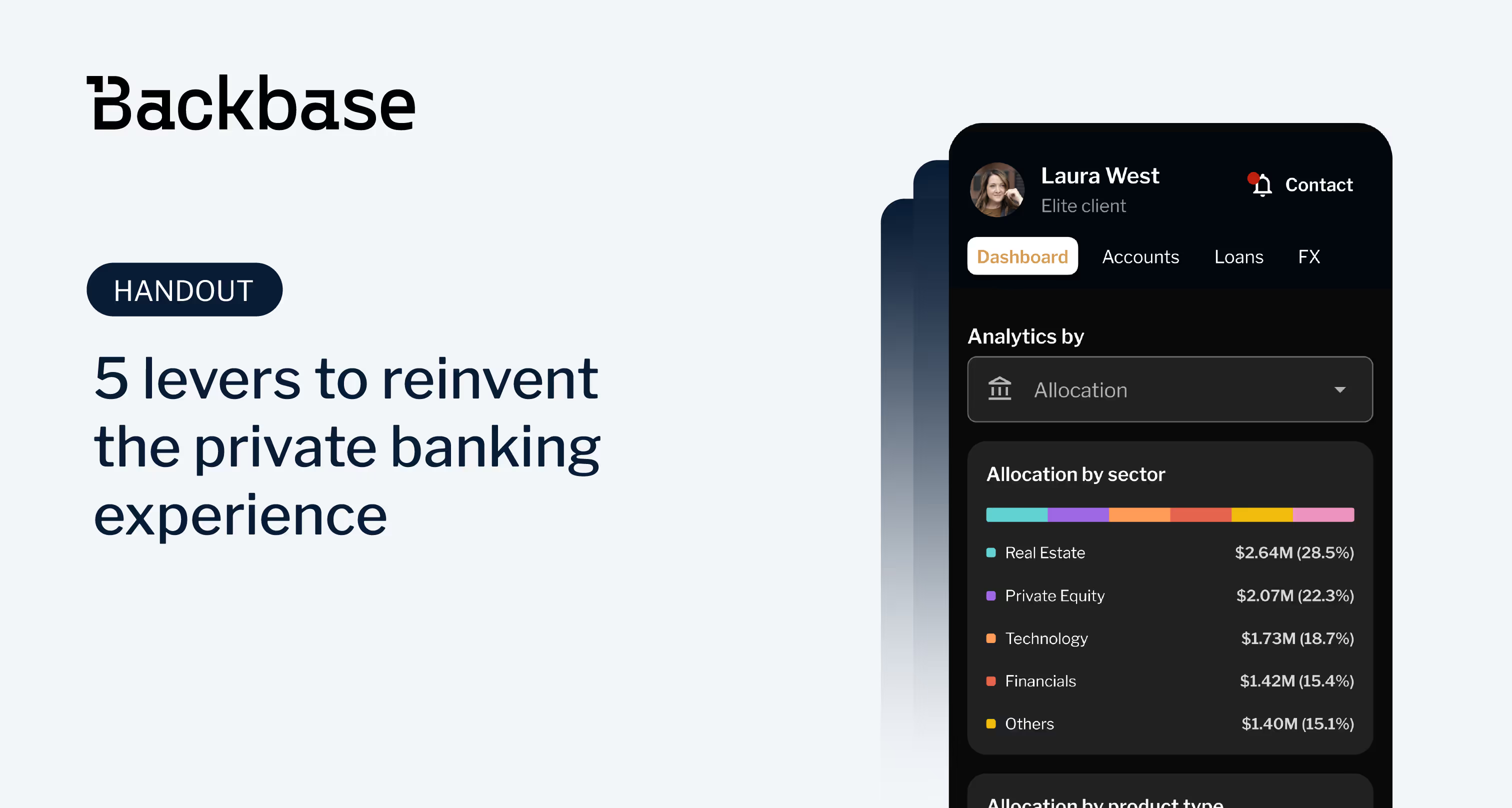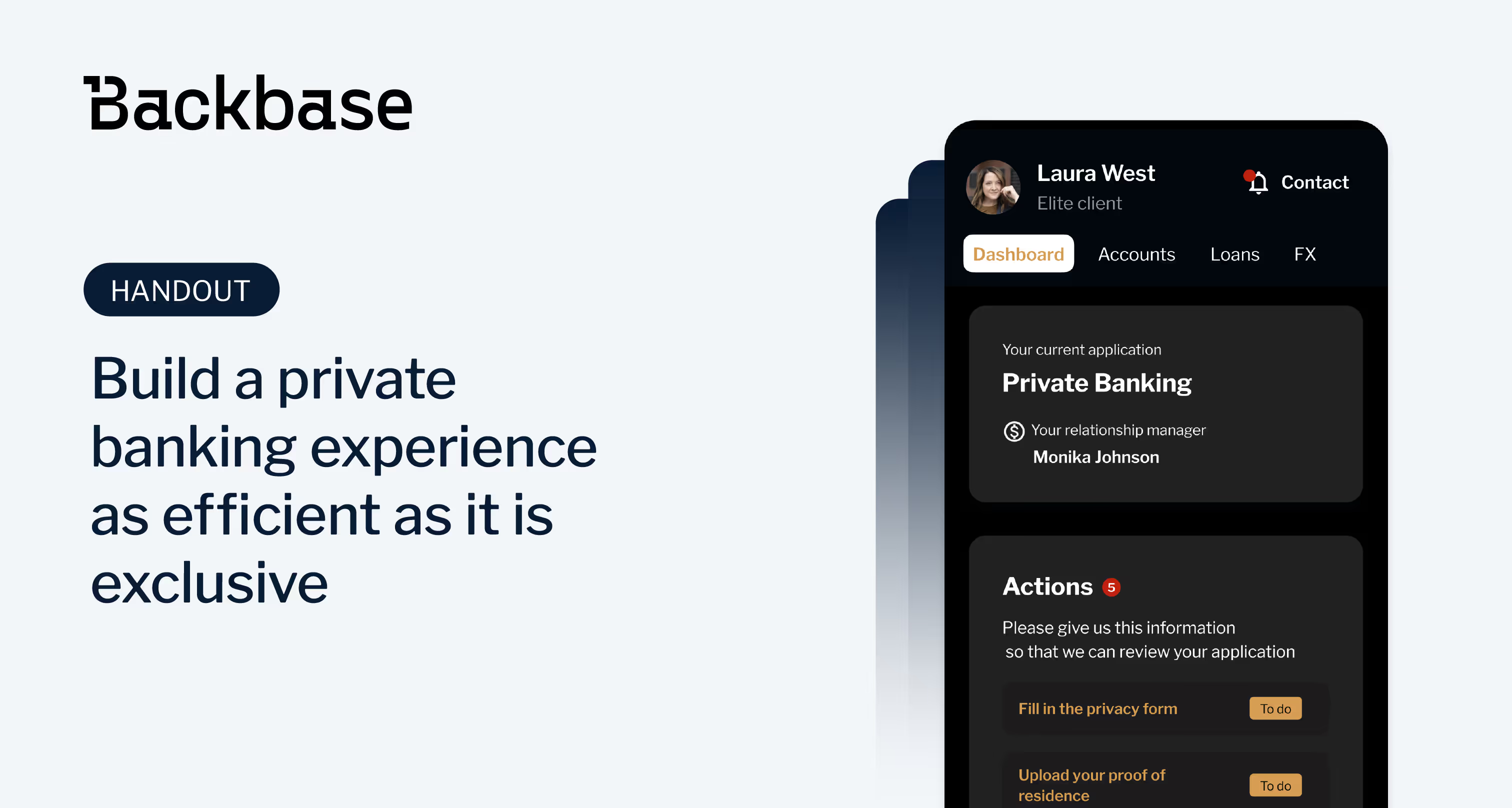Introduction
The strength of the advisor-client bond determined whether a firm could grow assets, build loyalty, and extend its share of wallet; that was the case for decades. But today, that foundation is being tested. Firms are facing margin pressure, intensified competition, and client expectations that are rising faster than most operating models can accommodate.
Amid these challenges, one critical part of the client journey remains stuck in the past: onboarding. Too often treated as a compliance hurdle, onboarding is in fact one of the most powerful profit levers wealth managers have. Done poorly, it delays revenue and puts client relationships at risk before they even begin.
Done well, it accelerates time-to-invest, reduces acquisition costs, and sets the tone for a long and profitable relationship.
The current state: friction and lost opportunities
Onboarding in wealth management is notoriously slow and fragmented. According to Capgemini’s 2025 wealth management report, nearly 30% of firms take three months or more to onboard ultra-wealthy clients. That is three months of idle capital, three months without fee revenue, and three months of client frustration before a relationship truly begins.
Celent’s analysis goes further, highlighting how onboarding processes remain fragmented, manual, and largely paper-based. Advisors and operations staff often enter the same client data multiple times across different systems. Documents are sent back and forth via email, with wet signatures still required in many jurisdictions. The result is not just inefficiency but also higher error rates, with “Not In Good Order” (NIGO) submissions leading to further delays and compliance risks.
This creates an immediate disconnect: firms promote themselves as modern and digital, but the first client experience is often frustratingly analog.

Why wealth firms should care
For many firms, onboarding is seen as a cost of doing business — something that must be endured rather than optimized. But in reality, inefficient onboarding carries a direct financial penalty across multiple dimensions:
1. Delayed revenue capture
Every extra week in onboarding is a week that assets sit idle. For large clients, this can mean tens or hundreds of millions of dollars not yet generating fees. Capgemini highlights that lengthy onboarding cycles directly erode profitability because firms wait months before seeing a return on acquisition efforts.
2. Higher cost-to-serve
Manual processes inflate costs. Operations staff spend hours chasing documents, reviewing submissions, and reconciling errors.
Advisors, whose time is the most expensive in the organization, are forced into administrative roles instead of focusing on client engagement. Fragmented, manual onboarding not only slows time-to-revenue but also pushes up the cost of acquisition.
3. Advisor productivity loss
Advisors are the growth engine of any wealth firm, yet onboarding inefficiencies tie them up in low-value work. Digitized onboarding improves advisor productivity, freeing them to handle more clients and deepen relationships. In an industry where top advisors often have client capacity constraints, this productivity gain directly translates into revenue growth.
4. Regulatory and compliance exposure
Inefficient onboarding is not just about speed.
AML/KYC fines increased by 31% in 2024, showing that manual, error-prone processes expose firms to significant financial penalties.
A single compliance failure can wipe out the profit of dozens of new client relationships. Taken together, these challenges make a compelling case: onboarding is not a back-office nuisance, but rather a frontline profitability issue.
What a modern client onboarding experience looks like
If the old model of onboarding is costly and inefficient, what does modernization look like? Industry leaders and technology research firms point to several key capabilities that define the future of onboarding:
1. Advisor-led collaboration
Instead of leaving clients to navigate a maze of forms and signatures, modern onboarding gives advisors digital tools to collaborate in real time. Interactive portals allow advisors and clients to work side by side, streamlining the process and reducing drop-offs. This turns onboarding from an administrative process into a relationship-building moment.
2. Automated compliance
Automation is central to reducing both risk and cost. AI-enabled KYC and AML checks can verify identities in real time. Smart document collection systems ensure all required information is captured correctly the first time, slashing NIGO rates. Automated approval workflows move applications forward without manual intervention, reducing operational bottlenecks.
3. Personalized starting point
Instead of waiting until onboarding is complete to introduce investment options, modern platforms embed portfolio recommendations and mandate choices into the process. This positions onboarding not just as compliance, but as the start of tailored advice.

4. Omnichannel experience
Onboarding transformation should be a front-office priority. Modern onboarding journeys span web, mobile, and advisor-led channels, allowing clients to start on one device and finish with their advisor without disruption. This consistency signals professionalism and meets the expectations of investors accustomed to smooth omnichannel experiences with other services they use.
The competitive imperative
Why does this matter now? Because the wealth management landscape is changing faster than ever.
- WealthTech challengers are setting new standards for speed and simplicity. Disruptors can onboard clients in days, not months, raising expectations for the entire industry.
- Regulatory scrutiny is increasing, with rising fines and tighter standards making manual processes untenable.
- Margin compression means firms can no longer afford bloated acquisition costs or long delays in fee generation.
Across the industry, onboarding is emerging as a priority area for investment. Firms that take steps now will be better positioned to capture future growth, while those slower to adapt may face greater pressure over time.
From cost center to growth lever
The firms that will win the next decade are those that stop treating onboarding as a back-office formality and start using it as a strategic advantage. In a market defined by shrinking margins and rising expectations, onboarding may be the most underleveraged growth engine in wealth management.
Across the industry, leaders are already investing in technology to make onboarding faster, smarter, and more client-friendly. Backbase enables this shift by equipping firms with digital onboarding capabilities that reduce time-to-invest and empower advisors to focus on high-value engagement — transforming the very first step of the client journey into a lasting source of profitability.





